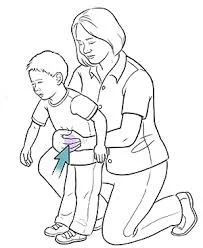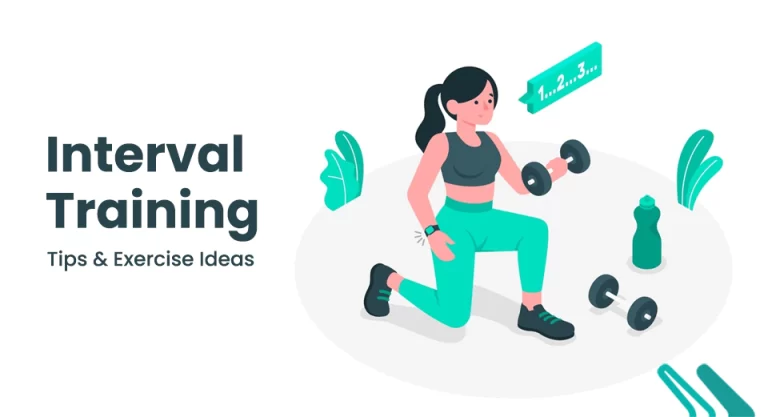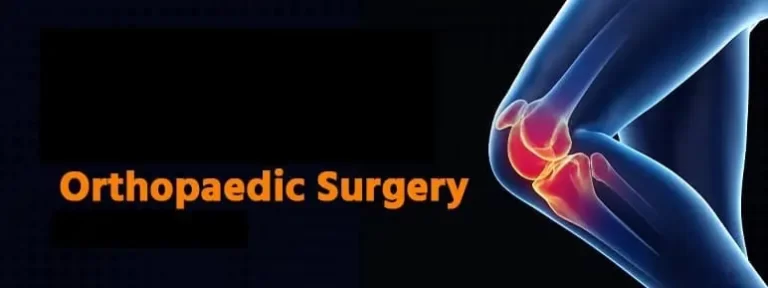Abdominal Thrusts
What are Abdominal Thrusts?
- Abdominal thrusts, sometimes referred to as the Heimlich maneuver are a first-aid technique used to treat foreign object-induced upper-airway blockages (or choking).
- Henry Heimlich, an American physician, is frequently attributed to discovery. Abdominal thrusts are administered by a rescuer who stands behind the person who is choking and presses on the bottom of the diaphragm with their hands.
- In an attempt to remove the object stuck in the trachea, this compresses the lungs and applies pressure on it.
- The majority of contemporary protocols, such as those from the American Heart Association, American Red Cross, and European Resuscitation Council, suggest treating airway blockages in stages that are intended to apply increasing amounts of pressure.
- The majority of guidelines advise giving the subject heavy back slaps, prodding them to cough, and As a last option, use chest or abdominal thrusts.
- Choking can result from anything getting lodged in the neck or windpipe and obstructing the airway.
- In adults, the typical cause is a bite of food.
- A choking incident can be fatal. It depletes the brain’s oxygen supply. In an emergency, administer first aid as soon as you or someone else is choking.
Anatomy and Physiology
- The Heimlich maneuver’s anatomy primarily focuses on pushing out a foreign body by standing behind the patient, putting arms around them, and giving the abdomen just below the rib cage a forceful inward thrust that goes upward.
- In the supra-laryngeal region, foreign objects linked to choking are typically lodged above the cricoid cartilage.
- Regarding the actual maneuver, the thrusts have to be made over the area of the patient’s stomach that is directly below the ribs and upward toward the patient’s head. The thrust maneuver can be carried out above the sternum if the patient is pregnant.
- The abdominal thrust maneuver works physiologically because diaphragmatic thrusts raise intrathoracic pressure, which affects the stomach, esophagus, and lung/airway.
Indication of Abdominal Thrusts
- The adult who is aware and choking due to a foreign body trapped in the supra larynx is the only recognized indication for performing the abdominal thrust procedure.
- The primary cue to do the Heimlich maneuver is the universal choking sign. The inability to breathe, speak, or cough while placing both hands up to the throat is the indicator.
- The Heimlich maneuver is not helpful with asthma or individuals who are drowning, despite earlier reports to the contrary.
- The inadequate application of the Heimlich technique for purging in adolescents with eating problems was the subject of another case study.
Contraindications
- The American Heart Association (AHA) does not suggest the abdominal thrust maneuver for unconscious patients, even though there are no absolute contraindications.
- Additionally, rather than abdominal compressions, sternal compressions should be used to manage pregnant subjects.
Symptoms
- A hand or both gripped the throat
- an afraid, shocked, or confused expression
- unable to communicate
- tense or energetic respiration
- squeaky noises made while breathing in
- Cough, which could be light or intense
- skin, lips, and nails that change color and become gray or blue
- unconsciousness
Technique of Abdominal Thrusts
- Abdominal thrusts are administered by a rescuer standing behind an upright patient and applying firm pressure with the hands to the bottom of the diaphragm.
- As an example, create a fist with one hand and grab the fist with the other to press with both right above the patient’s navel.
- In an attempt to remove any object stuck in the trachea, this compresses the lungs and applies pressure on it.
- The pressure feels like a cough that was produced artificially. More force could be required to help someone larger.
- The rescuer’s hand and fist are positioned in the same way, thrusting upward as though trying to raise the victim.
- If the victim is unable to apply pressure on their abdomen (due to pregnancy or other medical conditions), or obesity), chest pushes are recommended.
- These are put to the lower portion of the thoracic bone, avoiding the xiphoid process, which may be fractured, at its extremity.
- The American National Institutes of Health advises placing sufferers who are not upright on their backs, straddling their torsos, and applying chest thrusts.
- It is conceivable for victims of conscious choking to execute the process on their own, independently.
- Abdominal thrusts can cause harm to the sufferer even if they are done correctly due to their strong nature.
- Abdominal bruises are quite possible, and more severe wounds like rib or xiphoid process fractures could also happen.
- After the abdominal thrusts, the patients should seek medical assistance. The force produced by inward abdominal thrusts is comparable to that produced when the force is directed both upward and inward, resulting in intrathoracic pressure values of 50–60 cmH2O.
- According to the experts, there may be less risk of harm to the upper abdominal organs or rib cage when doing this, making it easier to accomplish.
- Participants in the study self-administered abdominal thrusts that created pressures comparable to those produced by first aid providers.
- When participants pressed onto the back of a chair in an abdominal thrust, the highest pressures were recorded (115 cmH2O).
Video of Abdominal Thrusts Procedure
Associatated choking first aid technique?
- If a person or child over one year old is cognizant and choking on food or a foreign item, a series of back blows and abdominal thrusts under the diaphragm are recommended.
- When something obstructs the airway and prevents a person from speaking, coughing, or breathing, they are said to be choking.
- Nothing can pass through for air. The obstruction of the airway may cause death or a loss of consciousness.
- Take care not to overextend yourself when performing the abdominal thrusts to avoid hurting your internal organs or ribs.
- Apply chest compressions if the victim is not conscious.
- Start by landing five back strikes in succession.
- If it’s feasible, lower the move forward till their upper body is in line with the floor. Put one arm around the person’s chest to offer support.
- Bend over the person if they are a child.
- Five fast thumps (back blows) between the person’s shoulder blades should be delivered with the heel of your free hand.
- After that, give five abdominal thrusts.
- The diaphragm is lifted by abdominal thrusts.
- They expel sufficient air from the lungs to produce a fake cough.
- This cough facilitates air passage via the windpipe, forcing the blockage out of the mouth and airway: Grab the person’s waist with your arm.
- Put one closed fist below the rib cage and above the navel, or belly button.
With your other hand, make a fist. - Draw the tightly closed fist straight and sharply backward, and immediately five times under the rib cage, upward.
- Give chest thrusts if the person is obese or in the latter stages of pregnancy.
- Up until the obstruction is removed, the person loses consciousness, or advanced life support is provided, don’t stop giving back blows and abdominal thrusts.
- In either case, the patient needs to be seen as soon as possible by a medical professional. You can perform thrusts on yourself if you’re choking and by yourself.
- Alternatively, you can press your upper abdomen up against a chair’s back or a counter’s edge.
- Woman doing self-rescue choking by bending over the back of a chair.
Abdominal thrusts and back hits have the potential to cause pain and possibly injury. - Use them only in cases of true emergency, when you are positive the person is choking. Only use this technique on adults and kids older than one year old.
- For newborns under one year old, a different technique is employed. Talk to their healthcare practitioner about the proper first aid procedure for choking victims, such as your child.
Are you capable of using the Heimlich maneuver on infants?
Using the Heimlich maneuver on infants less than 12 months of age is not advised. Babies should instead be given backslaps, or back blows.
To use this approach, take the following actions:
With the baby’s chest resting on your forearm, turn them facedown. Verify that their head is below their torso.
Five times, strike the baby between the shoulder blades with the heel of your hand. The blows should be forceful but not so forceful as to hurt someone.
Examine the baby’s mouth and take out anything that is on display.
Lift the baby’s head and turn them face up if their airway is still closed. Five upward and inward chest thrusts, ranging from ½ to 1½ inches, should be made with your second and third fingers. enters the sternum, the baby’s breastbone.
Once more, look into the baby’s mouth for anything noticeable. Continue doing this until the baby loses consciousness or the object is released (dislodged). Start CPR if the baby loses consciousness.
How is the Heimlich maneuver applied to an obese or pregnant person?
- Obese or pregnant people can perform the Heimlich technique slightly differently. The sternum, or breastbone, should be the target of the thrusts rather than the abdomen.
- Are you able to do the Heimlich technique on yourself?
- If you’re by yourself and choking, you can attempt to extricate the object by giving yourself the Heimlich maneuver.
- To use this approach, take the following actions:
- With one hand, make a fist, then firmly clasp the other hand.
- Put your fist’s thumb side directly below your ribs and two inches above your navel, or belly button.
- Five times, quickly and sharply shove your hands upward and inward.
- Continue doing this until the thing is released (dislodged).
- Another option is to try stooping over a chair, table, or railing. Next, rapidly and forcefully press your upper abdomen against the edge.
Which side effects do Heimlich maneuvers pose?
- The Heimlich technique is thought to be a rapid and safe way to save lives. Doing the Heimlich technique does not require any medical expertise or training.
- But if the Heimlich maneuver isn’t done correctly, it can cause catastrophic damage to the abdomen. Issues may arise if the foreign object is not removed following the initial few thrust sets.
- Breached ribs and perforations in the gastrointestinal tract are the most frequent consequences of the Heimlich maneuver.
- Even though other uncommon stomach issues can occur, doing the Heimlich maneuver is still advised in a life-threatening emergency.
What can I do to keep my kid from choking?
- Young children are particularly at risk for choking. To keep your kid from choking:
- Keep risks and tiny objects out of their reach.
- Dictate their meal into tiny bits.
- When handling spherical things like grapes, almonds, and hot dogs, exercise extra caution.
- Keep kids from eating hard candies.
- Observe your children while they eat and play.
Complications
- Cases of damage caused by the abrupt rise in intrathoracic pressure and forceful displacement of the diaphragm have been the focus of several reviews and studies ever since the Heimlich technique was developed.
- Even though this operation is thought to be life-saving and typically safe to carry out, improper technique or exceptionally aggressive administration can result in serious intra-abdominal damage.
- According to a manikin study previously described, if the foreign body is not removed after the first set of thrusts, there is a chance of catastrophic injury.
- Rib fractures and stomach or esophageal perforations are the most often reported consequences.
- There are additional uncommon severe wounds like ruptures of the spleen, pneumomediastinum, aortic dissection, rupture of the aortic valve cusp, diaphragmatic herniation, perforations of the esophagus and jejunum, rupture of the liver, and cholesterol embolization resulting in arterial occlusion.
Summary
- The Heimlich maneuver is a choking technique used in first aid. When someone’s upper airway becomes blocked or obstructed, they are said to be choking.
- Their windpipe or neck could be obstructed by food, a toy, or another tiny object.
- Although it’s not advised for infants, adults and children can both do the Heimlich technique.
- To do the Heimlich technique, encircle the victim with your arms, make a fist with one hand, and grip it with the other.
- You push your hands into their abdomen until the thing is released by placing your fists between their belly button and ribcage.
- Although it can save a life, the Heimlich maneuver should only be performed on a conscious, non-conscious victim.
FAQ
What does the abdominal thrust entail?
In an emergency, abdominal thrusts can help open someone’s airway. A cognizant patient who is choking undergoes the operation. Abdominal thrusts are generally not advised for infants under a year old by specialists
What is the exclusive purpose of abdominal thrusts?
The Heimlich method, also known as the abdominal thrust maneuver, is used to relieve upper airway obstructions caused by foreign bodies. Although it is frequently taught in basic and advanced cardiac life support courses, this maneuver is not as frequently covered as chest compressions
Abdominal thrusts—who needs them?
For adults and children over one year old who are choking on a piece of food, a series of back blows and under-the-diaphragm abdominal thrusts are recommended.
Why are they called thrusts to the abdomen?
The Heimlich maneuver is a choking technique used in first aid. While it is safe for use on adults and children, it is not advised for use on newborns. Because the Heimlich maneuver entails thrusting into the abdomen region, it is often referred to as abdominal thrust.
What distinguishes an abdominal thrust from a chest push?
The rescuer positions their hands behind the xiphoid process in the abdominal thrust and above it in the chest thrust.
References
- Abdominal thrusts: MedlinePlus Medical Encyclopedia. (n.d.). https://medlineplus.gov/ency/article/000047.htm
- Abdominal thrusts. (2024, January 6). Wikipedia. https://en.wikipedia.org/wiki/Abdominal_thrusts#
- Choking: First aid. (2022, October 11). Mayo Clinic. https://www.mayoclinic.org/first-aid/first-aid-choking/basics/art-20056637
- Rodriguez, J. A. O. (2023, May 23). Abdominal Thrust Maneuver. StatPearls – NCBI Bookshelf. https://www.ncbi.nlm.nih.gov/books/NBK531467/#article-32801.s
- Choking and Abdominal Thrusts – Health Encyclopedia – University of Rochester Medical Center. (n.d.). https://www.urmc.rochester.edu/encyclopedia/content.aspx?ContentTypeID=85&ContentID=P00825
- Professional, C. C. M. (n.d.). Heimlich Maneuver. Cleveland Clinic. https://my.clevelandclinic.org/health/treatments/21675-heimlich-maneuver







